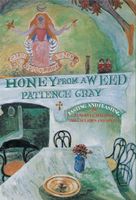Advertisement
Cooking and Eating Weeds
Published 1986
The essence of a ‘dish of weeds’, whether cooked or served as a salad, lies in employing a variety of different plants. There are exceptions, of course. For instance, the poppy plants are sometimes cooked alone, as are wild asparagus, and the corms of the tassel hyacinth and Crocus cancellatus; and the Greeks cook the leaves and shoots of mallow, Malva rotundifolia, in spring to pacify the stomach and relieve it of winter ills. But the general approach, and the best one, is essentially that of Dirce at Castelpoggio. It is very similar to that of the goat in the hedge, who nibbles at a plant here and a plant there. The goat knows what will do it good. We can no longer say this about man and woman. So we have to fall back on botanical studies.

